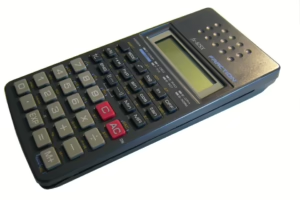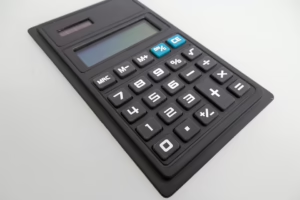Track, Analyze, Thrive: The Power of a Nutrition Calculator in Your Wellness Journey
In the age of information, understanding our nutritional habits is essential for cultivating a healthy lifestyle. With the rise of technology and mobile applications, the internet has made it easier than ever to track nutritional intake and make informed decisions. One such indispensable tool in this arena is the nutrition calculator. This article delves into how nutrition calculators empower individuals on their wellness journeys, emphasize their benefits, provide guidance for choosing the right one, and outline how they can ensure you thrive in your health goals.
Understanding Nutrition Calculators
A nutrition calculator is a digital tool that allows users to input food information to obtain detailed nutritional breakdowns. Users can analyze macronutrients (proteins, fats, carbohydrates) and micronutrients (vitamins and minerals) to understand their dietary intake. Most nutrition calculators come with user-friendly interfaces and databases containing thousands of food items, making food tracking straightforward and efficient.
The Science Behind Nutrition Tracking
Tracking nutritional intake is not merely about counting calories. Research suggests that understanding food variety and nutrient density can greatly influence overall health outcomes. A systematic review published by the Journal of Nutrition found that individuals who keep a food diary can increase their weight loss success by 50% compared to those who do not track their intake.[1] This statistic highlights the power of awareness in dietary habits.
Benefits of Using a Nutrition Calculator
1. Enhanced Awareness
Utilizing a nutrition calculator can shed light on your eating patterns. It offers a transparent view of what you consume daily, highlighting excesses and deficiencies:
-
Macronutrient Balance: By tracking macronutrients, users can ensure they meet their daily protein, fat, and carbohydrate goals, aligned with their fitness objectives, whether weight loss, muscle gain, or overall health.
-
Identifying Shortfalls: Many people unknowingly fall short on essential vitamins and minerals. A nutrition calculator can flag these deficiencies, guiding users to diverse food choices that meet their nutritional needs.
2. Goal Setting and Progress Tracking
Monitoring your diet through a nutrition calculator doesn’t just help in understanding current habits; it’s also instrumental in setting realistic wellness goals:
-
Customized Goals: Users can adjust their goals based on their physical activities, body weight, and health conditions. A personalized intake goal can be established—such as targeting higher protein intake for muscle gain.
-
Progress Monitoring: Tracking progress over time is crucial. Many calculators include features that visualize progress, helping users stay motivated by seeing real-time results of their commitment.
3. Education and Empowerment
Using a calculator provides an educational experience as users become more informed about their food choices:
-
Ingredient Awareness: Users learn about the nutritional value of foods they consume or might be considering including in their diet.
-
Healthy Replacements: Understanding nutritional content allows users to make informed, healthier substitutions—like replacing white rice with quinoa or soda with water.
4. Simplicity and Convenience
In our fast-paced world, simplicity and ease of use are paramount:
-
Mobile Accessibility: Many calculators are available as mobile apps, making it easy to track intake on the go. This mobile capability ensures that users maintain their tracking with minimal disruption to their daily lives.
-
Meal Planning: With a comprehensive database, users can plan meals ahead according to their nutritional goals, reducing the likelihood of impulsive, unhealthy food choices.
Choosing the Right Nutrition Calculator
Given the variety of nutrition calculators available, selecting the right one can greatly impact your tracking experience. Here are vital features to consider:
1. Comprehensive Food Database
A robust food database is indispensable. The calculator should include common grocery items and packaged foods, as well as restaurant meals, to accommodate various diets. The size and diversity of its database will determine how accurately it can track your intake.
2. User-Friendly Interface
The best calculators balance functionality with ease of use. A user-friendly interface with intuitive navigation makes it easier for beginners and experienced users alike to input data without frustration.
3. Customization Features
An effective nutrition calculator should allow customization based on dietary preferences (e.g., vegetarian, vegan, keto). Moreover, ability to set and adjust personal goals is crucial for tracking effectiveness.
4. Integration with Other Tools
Some nutrition calculators offer integration with fitness trackers and other health apps. This holistic approach to wellbeing allows users to align their dietary and fitness goals, creating a more comprehensive health regimen.
5. Community and Support
Check if the calculator provides support resources, such as articles or community forums. An engaged community can offer motivation, tips, and a sense of camaraderie on your wellness journey.
How to Integrate a Nutrition Calculator into Your Daily Life
After selecting a suitable nutrition calculator, it’s time to integrate it into your daily routine. Here’s how:
1. Set Clear Objectives
Define your wellness goals. Whether it’s weight loss, muscle gain, or better overall health, clarity about your objectives will help personalize your approach using the calculator.
2. Create a Routine
Incorporate food tracking into your daily regimen. Consider setting a specific time each day to log meals, which can foster a habit and enhance accountability.
3. Utilize Meals and Snacks Logging
Track everything you eat and drink, including snacks. Understanding your complete dietary intake is essential for accurate analysis and progress tracking.
4. Reflect and Adjust
Regularly assess your progress. Analyze trends and make necessary adjustments to your diet based on the insights provided by the calculator. Don’t hesitate to experiment with new foods or meal plans.
5. Seek Professional Guidance
Combining a nutrition calculator with guidance from a registered dietitian or nutritionist can amplify your efforts. Professionals can help translate the data into actionable advice tailored to your unique needs.
Real-Life Success Stories
Case Study 1: Ashley’s Weight Loss Journey
Ashley, a 30-year-old marketing executive, struggled with weight management for years. After implementing a nutrition calculator, she began logging her meals and understanding her dietary habits.
Initially, she tracked everything to identify caloric intake, focusing on increasing her protein while balancing carbohydrates and fats. After three months, Ashley lost 15 pounds, but her success was more than just the number on the scale. She felt energized, had increased clarity at work, and loved meal planning.
Case Study 2: John’s Muscle-Building Goals
At 25, John wanted to gain muscle but was uncertain about his caloric and protein needs. With the help of a nutrition calculator, he educated himself on the importance of a protein-rich diet. By tracking his intake, John discovered he was under-consuming protein.
He set a new goal to increase his protein intake by 20% and closely monitored his macronutrients. After six months, John not only met his muscle-building objectives but also developed an appreciation for diverse food options that fueled his workouts.
The Future of Nutrition Tracking
As technology evolves, the landscape of nutrition tracking is bound to change as well. Innovations such as artificial intelligence (AI) and machine learning are already beginning to influence how we approach nutrition:
-
Personalized Nutrition: Advanced algorithms could analyze user data to provide hyper-personalized meal recommendations based on genetic makeup, lifestyle, and preferences.
-
Augmented Reality (AR): Imagine using AR to scan food items and instantly get a nutritional breakdown, promoting healthier purchasing decisions right in the grocery store.
-
Wearable Technology: Integration of nutrition tracking with wearable devices may become the norm, allowing real-time tracking and adjustments based on physical activity levels and metabolic rate.
Conclusion
In conclusion, a nutrition calculator is not merely a dietary tool; it’s a comprehensive guide that can significantly enhance your wellness journey. By tracking, analyzing, and thriving through informed decisions, individuals can cultivate healthier eating habits, achieve their goals, and enjoy a more vibrant life. As technology continues to develop, the possibilities for nutrition tracking will only expand, making it an exciting and essential component of modern health management.
As you embark on this journey, remember that the power lies not just in the numbers but in the choices they inspire. Take charge of your health today; your body and mind will thank you for it.
[1] “The Impact of Food Diaries on Behavior Change: A Systematic Review,” Journal of Nutrition, 2020.
This article aims to provide comprehensive insights into the benefits and use of a nutrition calculator. For a complete wellness journey, consider integrating professional guidance alongside your technology-driven tools. Together, they can lay the foundation for lasting health and well-being.


























Add Comment